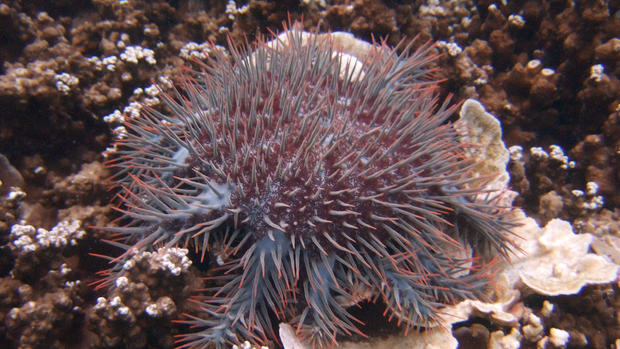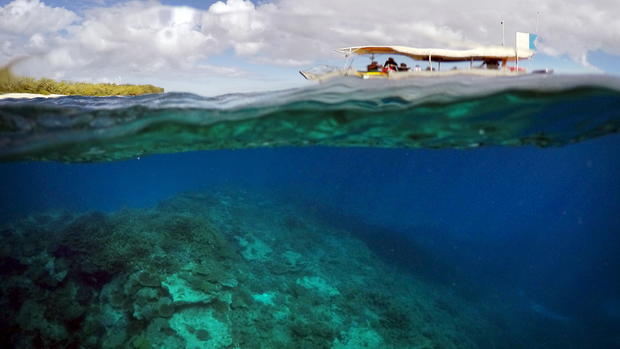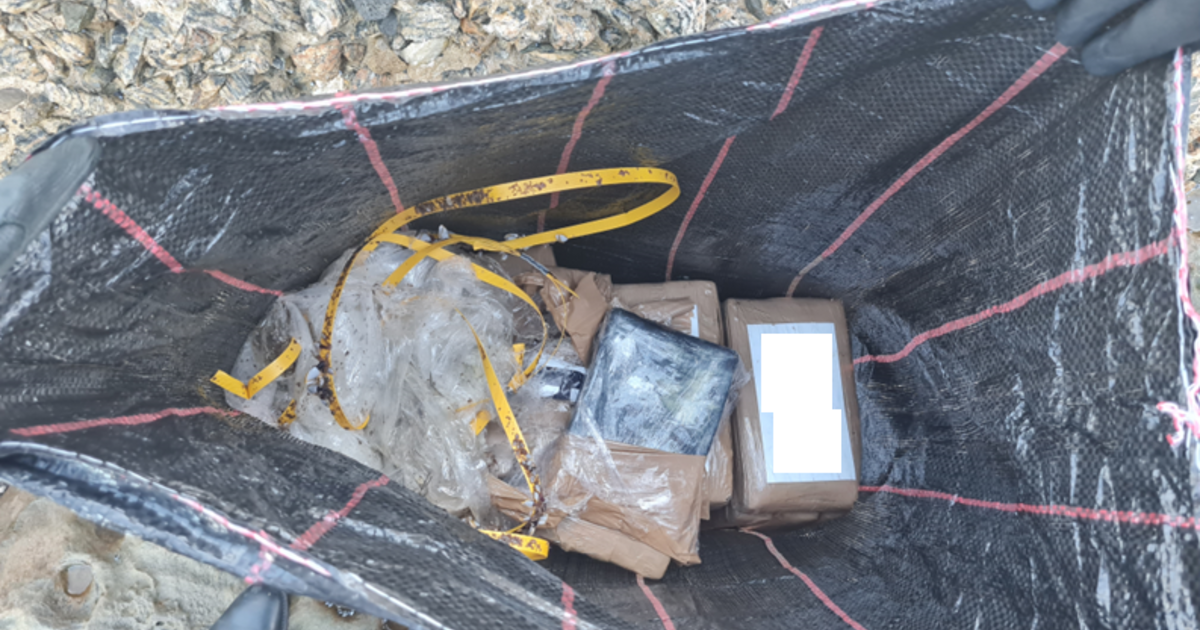There's still time to save the Great Barrier Reef from dying
This is part of CNET's series, "Rebooting the Reef," on efforts to save one of the world's greatest natural wonders.
No one would challenge the majesty of Australia's Great Barrier Reef.
Nearly 1,500 miles long, the reef is alight with a kaleidoscope of vivid colors. It's home to roughly 9,000 species of fish, molluscs, whales and other creatures. In 1981, the reef was designated a UNESCO World Heritage Site, a status that helps it draw 2 million visitors a year.
It's also dying. At our own hands.
Two major bleaching events have wracked the Great Barrier Reef over the last two years, leaving chunks of it dead. Bleachings happen when the coral expels tiny algae, called zooxanthellae, that live inside it and provide its food and create its rainbow hues. Without zooxanthellae, the reef's tissue turns transparent and the coral starves.
- Can a man-made Great Barrier Reef help save the real one?
- Mapping the Great Barrier Reef with cameras, drones and NASA tech
Global warming, fueled by our reliance on petroleum and coal, has pushed ocean temperatures 0.68 Celsius over the past century. That might not seem like much, but it's enough to prompt the coral and algae to abandon their symbiotic relationship. While coral doesn't die immediately, the bleachings have been intense enough to kill huge swaths of one of the world's most stunning natural wonders, including 29 percent of its shallow water coral in 2016 alone.
"Everybody thinks we've got to worry about saving the the Great Barrier Reef for future generations," says Daniel Harrison, a research fellow at the Sydney Institute of Marine Science, who's working on a project to brighten clouds so that they reflect sunlight away from the reef. "We've got to worry about saving the reef for our generation."
It's not too late to save the the Great Barrier Reef and other coral outcroppings, like those in the Caribbean, that are affected by rising sea temperatures. Australia and Queensland, the state where the reef is located, are committing roughly AU$200 million ($157 million) a year to preserving its glory. Organizations like the Ocean Agency and Great Barrier Reef Legacy are marshalling resources to save reefs. Movie star Leonardo DiCaprio has generated celebrity attention, telling the U.S. Department of State last year that he saw "colorless, ghostlike coral" on a reef trip. He was also named a UN Messenger of Peace with a special focus on climate change in 2014.
Cutting-edge technology, much of it developed in Australia, can also play a role in repairing the reef, though it won't substitute for curbing climate change. At James Cook University, a research team is using sonar to create a 3D map of the reef. At the Australian Institute of Marine Science, the government has built an artificial ocean to examine the effects of global warming on coral. At the University of Western Australia, one scientist is hoping to discover the secrets of coral's genes and selective breed heat-resistant specimens.
Over the coming week, CNET will examine efforts to save the Great Barrier Reef. That activity is vital because we'll lose more than a beautiful tourist destination if nothing is done. Coral reefs are a source of food and medicine. Six million fishermen are estimated to ply the waters of coral reefs around the world, and reef fish provide protein for roughly a billion people. Scientists have developed cancer, cardiovascular and ulcer treatments from reef plants and animals, while coral's structure has been used to make advanced bone grafts.
In Australia, the Great Barrier Reef generates an estimated AU$6 billion in economic activity, according to the Queensland government. The reef, either directly or indirectly, supports 69,000 jobs. Losing it would be a hit to Australia's economy, one of the strongest in the world.
And the Great Barrier Reef isn't called a "barrier" for nothing. It's a coastal defence against tropical storms and strong ocean movements. Australia's peaceful shores might not be as serene without coral reefs protecting them.
In short, losing the Great Barrier Reef would be a tragedy.
Made up of 3,000 individual reefs, the Great Barrier Reef stretches from the tip of Queensland, down to Hervey Bay, just north of Brisbane. It's as big as Germany, covering 347,800 square kilometers (134,000 square miles). It's one of the most diverse habitats in the world, ranked near tropical rainforests for biodiversity.
Coral doesn't die straight away when bleached. If the stress isn't too intense and bleaching events are infrequent, coral and its inhabitants can return to normal in a decade or two. Marine biologists know this because bleachings have occasionally happened after heavy rainfalls, such as a cyclone, or after a particularly warm summer.
"Corals will recover, but to do that they need time," explains Christian Roth, Great Barrier Reef research coordinator for Australia's Commonwealth Scientific and Industrial Research Organisation. "If through climate change, for instance, the frequency of such ocean warming events or major cyclones increases over time, it means that there's less time between individual events for the corals to recover."
The year between the Great Barrier Reef's 2016 and 2017 bleachings, which were caused by climate change and exacerbated by Severe Tropical Cyclone Debbie, isn't long enough for recovery. The bleachings were so bad the Great Barrier Reef Marine Park Authority hasn't been able to determine how much of the reef died. More is expected to be dead by the end of this year.
The effects of climate change compound the impact other human activity has on the reef. Polluted water runs off of the land, stressing coral. It comes in many forms: sediment from soil erosion and ports; nitrogen and phosphorus after crop fertilization; and untreated waste from cities. Overfishing changes the natural balance of the reef, contributing to its struggle to recover.
The story of the crown-of-thorns starfish, which eats coral, pulls together the threads of man's role in destroying the reef.
Farmers in Queensland use lots of fertilizer to grow sugarcane, a key crop. Some of the fertilizer makes its way to the reef, where the nitrogen in it prompts algal blooms. That, in turn, encourages a population boom in a type of starfish that eats algae as larvae before turning to coral for food as adults.
Over the last three decades, the reef has been plagued by multiple explosions of the crown-of-thorns starfish population, including a current boom that's linked to high nitrogen levels. The rising starfish population comes as overfishing thins its natural predators, like the giant triton snail.
"A cyclone happens once off over a period of days. Coral bleaching might happen over say a period of a month or two," says Cherie Motti, an ecologist at the Australian Institute of Marine Science. "But crown-of-thorns starfish are there pretty much until all the coral is eaten."
The Great Barrier Reef is large and diverse. Reefs close to the shore are affected by river runoff. Outer reefs aren't. Southern reefs, in cooler waters farther from the equator, won't feel the brunt of bleaching. Those in the tropics will. There's no one-size-fits-all solution to saving it.
Efforts to help the reef recover are underway. Stricter fishing rules have been imposed, pollution has been limited and some dredging banned. Scientists at the CSIRO, James Cook University and the Australian Institute of Marine Science, which runs a mammoth Sea Simulatornear the reef, are looking for solutions.
But it will take more than Australia to save the Great Barrier Reef and its sister reefs around the world. The surest way to save them is to curb global warming.
"If we don't do anything," CSIRO's Roth says, "there's a high likelihood of very large areas of reefs basically disappearing across the world."
This article originally appeared on CNET.






